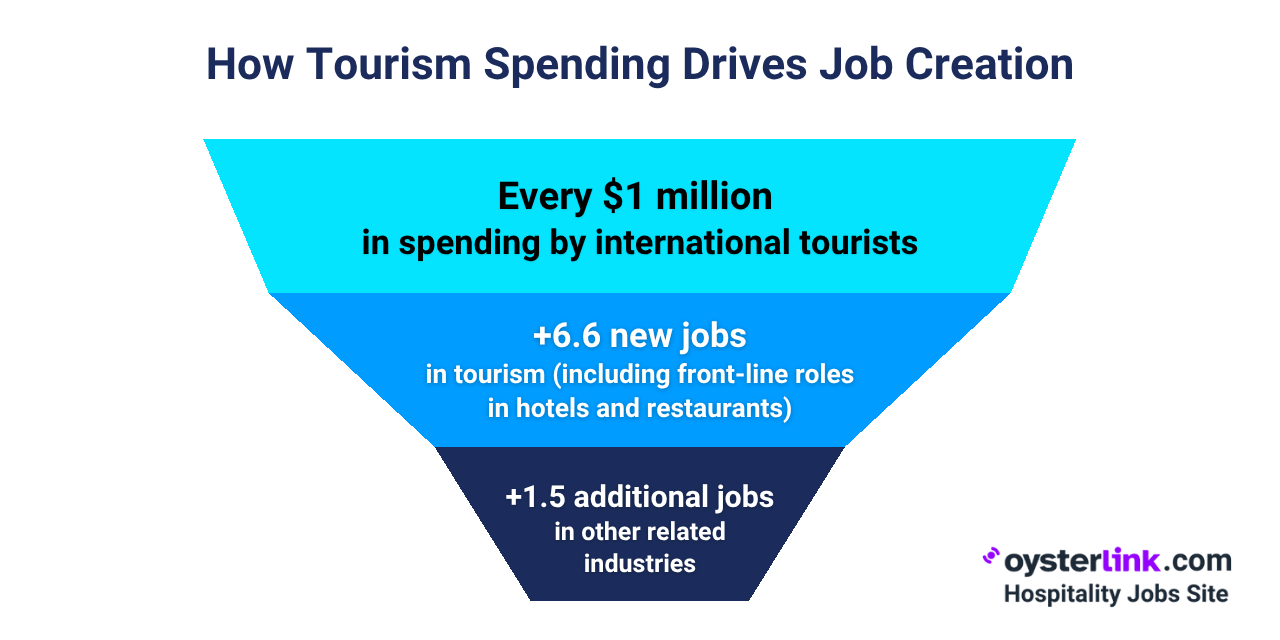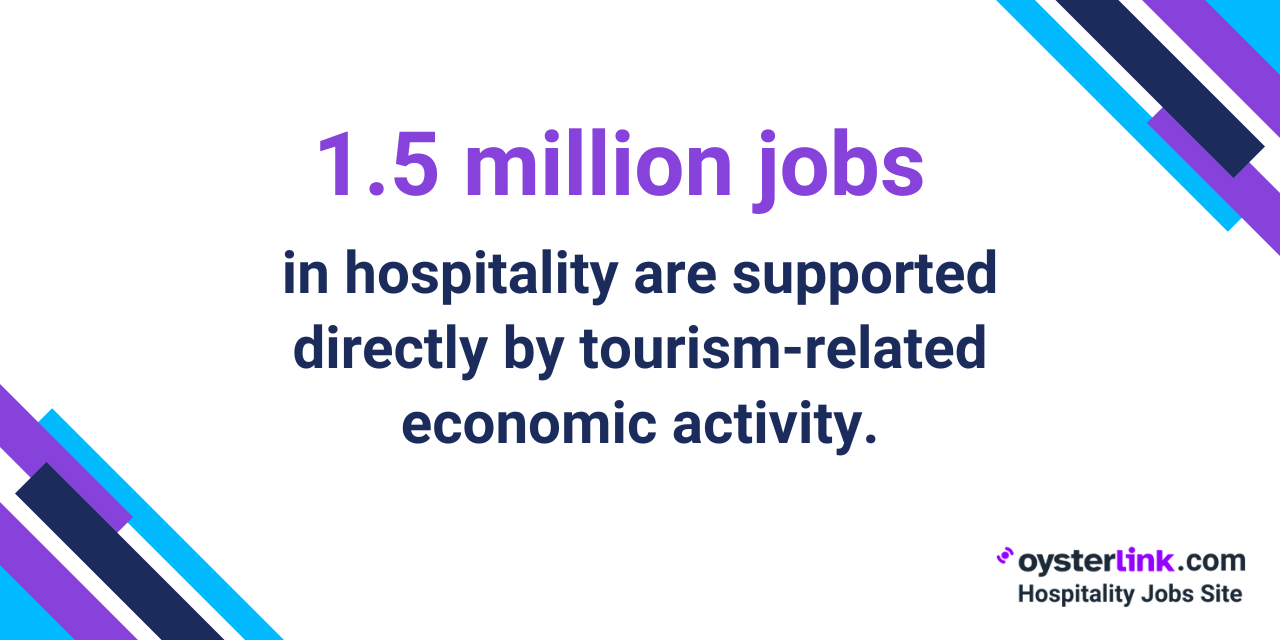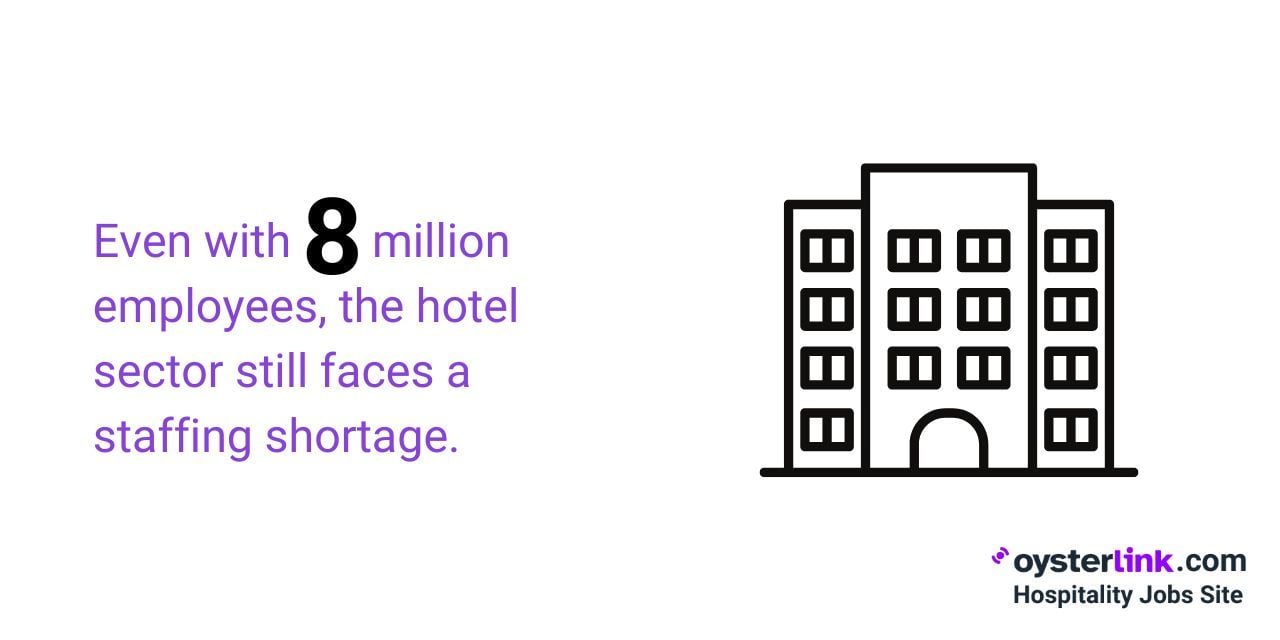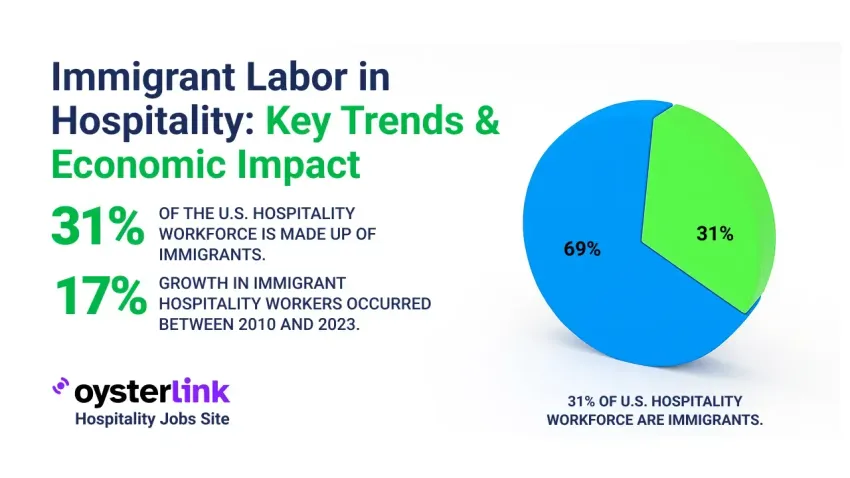Immigrant Labor in Hospitality: Key Facts
- From 2010 to 2023, immigrant workers in the U.S. hospitality sector grew by 17.9%.
- In 2023, three million foreign-born workers were employed in the sector.
- Immigrants currently make up 31% of the country's hospitality workforce.
- Hospitality is the sixth-largest U.S. industry employing immigrants.
Immigrant labor in hospitality plays a vital role in the U.S. economy, filling critical staffing gaps and supporting growth in food service, accommodations and tourism.
This report highlights key statistics, labor trends and policy discussions related to foreign-born workers in the industry.
Immigrant Labor in Hospitality: Employment Trends and Workforce Shifts
The U.S. hospitality workforce has changed a lot in more recent years. Immigrant workers now play a bigger role in helping the industry grow.
From 2010 to 2023, the hospitality sector added more jobs and began relying more on foreign-born workers.
According to the U.S. Census Bureau:
- Out of the 160.2 million people in the overall U.S. workforce, approximately 29.7 million (or 18.5%) are foreign-born.
- The number of immigrant workers in hospitality grew by 17.9%.
- U.S.-born workers in the same field grew by 20.3%.
- In 2023, there were three million foreign-born workers in the sector, making it the sixth-largest employer of immigrants in the country.
This highlights the growing dependence on immigrant workers in the industry.
To provide further context, here's a table showing the top 10 industries that employ foreign-born workers:
| Industry | Estimate number of employed foreign-born workers |
| Educational and health services | 5.5 million |
| Professional and business services | 4.7 million |
| Construction | 3.3 million |
| Manufacturing | 3.2 million |
| Wholesale and retail trade | 3 million |
| Hospitality and leisure | 3 million |
| Transportation and utilities | 2.1 million |
| Financial services | 2.1 million |
| Other services (e.g., auto repair, barber and beauty salons) | 1.6 million |
| Public administration | 766,000 |
While industries like healthcare and construction hire more immigrants overall, hospitality stands out for the types of roles it offers.
Many hospitality jobs — such as Line Cooks, Housekeepers and Front Desk Staff — don’t require a degree but involve physical work, long hours and guest interaction.
The data also highlight two major trends:
1. Automation hasn’t replaced key hospitality jobs
Automation has simply augmented certain roles, but the need for human workers remains high.
Even with new tools like self-check-in kiosks, mobile apps and AI chatbots, many roles still need people on-site.
Tasks like cleaning rooms, preparing food, setting up events and talking to guests are still done by people — and many of them are immigrants. At the same time, fewer U.S.-born workers are applying for these jobs, particularly those that require physical labor and long hours.
This is partly due to a decrease in U.S.-born workers with a high school diploma or less, especially among those aged 25-44, who traditionally are the ones stepping in for labor-intensive jobs.
As a result, the hospitality industry has increasingly relied on immigrant workers to fill these essential roles.
2. Immigrants help keep operations running
They fill hard-to-staff roles, especially during busy times or peak seasons. Their contributions help restaurants remain operational and hotels avoid reducing services during high-demand periods. This steady support improves both revenue and the guest experience.
Also, recent data shows Nevada stands out as the state with the highest percentage of immigrant workers in hospitality and tourism.
In fact, around 37.3% of Nevada's workforce in this sector is comprised of foreign-born individuals.
Following closely behind are California (36.5%) and New York (35.1%).
States with large immigrant populations and strong tourism sectors rely heavily on foreign-born workers. They’re not just filling gaps — they’re essential to hospitality’s day-to-day operations and growth.
Economic Impact of Immigrant Labor in Hospitality
Immigrant workers not only help maintain service levels in the hospitality sector — they also support the economy more broadly.
Their role goes beyond staffing; it fuels tourism revenue, job creation and growth in related industries.
Also, immigrants currently make up 31% of the hospitality industry's workforce, despite comprising just over 13% of the U.S. population.
This highlights the significant role that foreign-born workers play in the sector, especially in essential, labor-intensive roles that are crucial to maintaining service levels and operations.
To better understand the full scope of their impact, let's explore how immigrant labor contributes to tourism revenue, job creation and broader employment effects.
Increase in Tourism Revenue
International visitors spend an average of $4,500 during their stay in the U.S., making tourism the country’s largest export among service-based categories.
This spending directly benefits local businesses including hotels, restaurants, transportation providers and attractions — many of which rely heavily on immigrant labor to function.
Job Creation Effects
For every $1 million spent by international travelers, the U.S. economy adds about 6.6 new tourism jobs.
These jobs include front-line hospitality roles such as hotel staff, tour guides and food service workers. Immigrant workers are well-represented in these roles, helping to meet the labor demand that keeps businesses running smoothly, especially during peak seasons.
Each of these roles then supports an additional 1.5 jobs in related industries.

For example, a hotel might generate ongoing demand for local laundry services, an accounting firm to manage payroll or a construction crew for renovation projects.
This ripple effect highlights the wider economic impact of immigrant labor, driving job creation in multiple sectors.
Broader Employment Impact
Altogether, tourism-related spending has helped create an estimated 1.5 million direct jobs within the hospitality sector.
Beyond that, it has generated 2.2 million jobs in other parts of the economy, including marketing agencies, manufacturing plants that supply hotel goods and service providers supporting tourism infrastructure.

These figures highlight why a stable, well-staffed hospitality workforce — one that includes immigrant employees — is essential not just for guest satisfaction but for sustaining a wide range of employment opportunities beyond the hotel lobby or restaurant.
The contributions of immigrant workers are crucial in sustaining this cycle of job creation, as they fill essential roles that ensure smooth operations and continuous service delivery across the entire tourism ecosystem. Without immigrant labor, this economic model could face significant disruption.
Immigrant Labor in Hospitality: Labor Shortages and Policy Responses
The American Hotel & Lodging Association (AHLA) states that even with eight million employees, the hotel sector lacks sufficient staffing.

The industry's reliance on immigrant labor is more pronounced during peak tourist seasons, where understaffing causes longer check-in lines, reduced restaurant hours and delays in guest services.
Hotel operators report frequent difficulty in hiring for roles such as Housekeepers, Line Cooks, Dishwashers and Front Desk Clerks.
H-2B Visa Program
To combat these shortages, industry groups are advocating for reforms in work visa policies — most notably the H-2B visa program.
This program enables foreign nationals to work temporarily in the U.S. when no qualified local workers are available.
Created by the Immigration Reform and Control Act of 1986, the program is a vital resource for seasonal businesses, particularly resort hotels and tourist attractions.
- The current cap is 66,000 H-2B visas per year.
- AHLA proposes raising this to 90,000 or more to meet actual demand.
- In previous years, the federal government temporarily increased the cap to 96,000 under pressure from both business groups and political leaders in states with tourism-heavy economies.
H-2B visa holders often return to the same jobs each year, offering familiarity and continuity that helps streamline operations.
Immigration Policy Impacts
In recent years, policy shifts have disrupted this labor pipeline. Visa backlogs, tighter entry rules and increased enforcement actions have all contributed to workforce instability.
Additionally, many immigrant workers were ineligible for pandemic-era financial aid, such as the CARES Act, which deepened their financial insecurity during times of mass unemployment.
Workforce Shortages Without Immigrant Labor in Hospitality
According to the National Restaurant Association, 62% of restaurant operators report being understaffed, underscoring how labor shortages remain one of the industry’s most pressing challenges.
Immigrant workers play a critical role in easing these gaps by taking on roles that are consistently difficult to fill, from kitchen staff to housekeeping and front-of-house service.
Without their contributions, many restaurants and hotels would be forced to cut hours, reduce services or slow operations during peak demand, making immigrant labor an essential part of keeping hospitality businesses fully functional.
Final Thoughts on Immigrant Labor in Hospitality
Hospitality is vital to the U.S. economy and relies heavily on immigrant labor for essential roles. As fewer U.S.-born workers enter the field, this reliance will only increase.
Policies that expand visa access, protect rights and support legal employment are key to the industry's recovery and long-term growth. Without investing in this workforce, the U.S. risks weakening a core sector just as travel demand rebounds.










Loading comments...